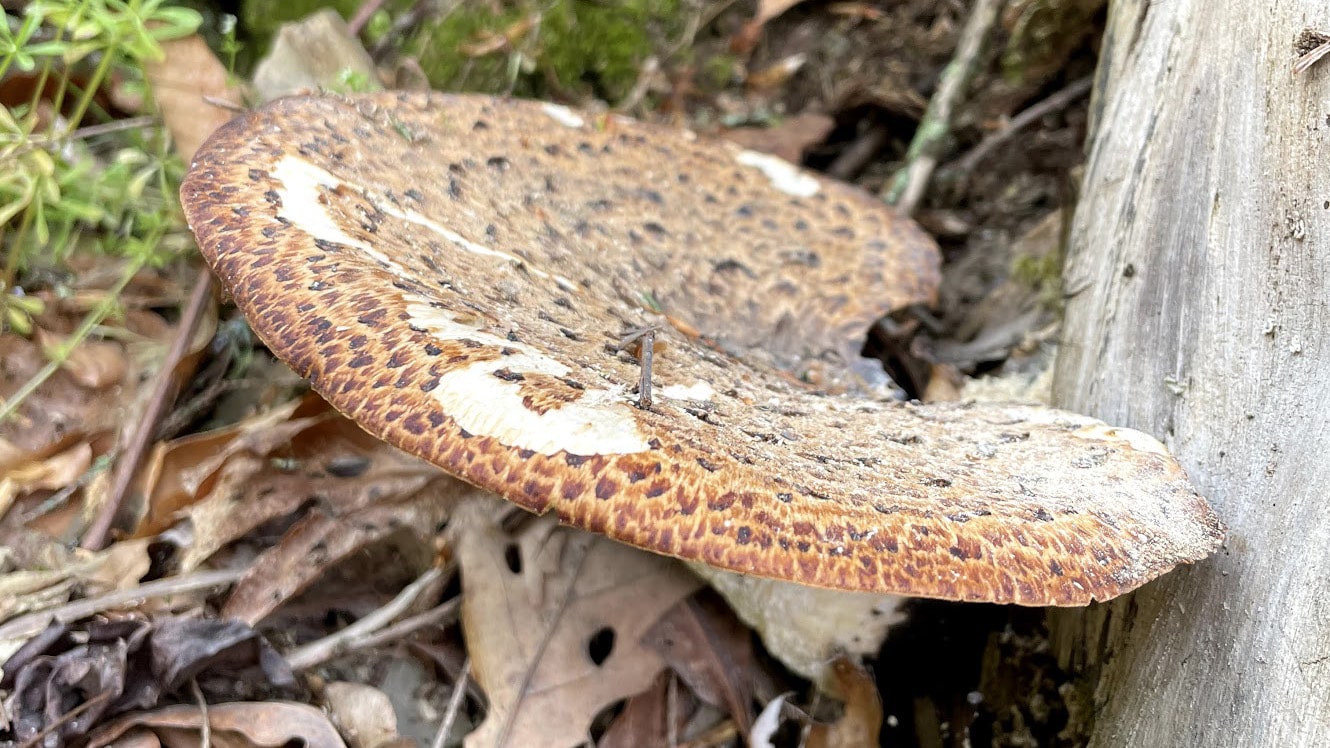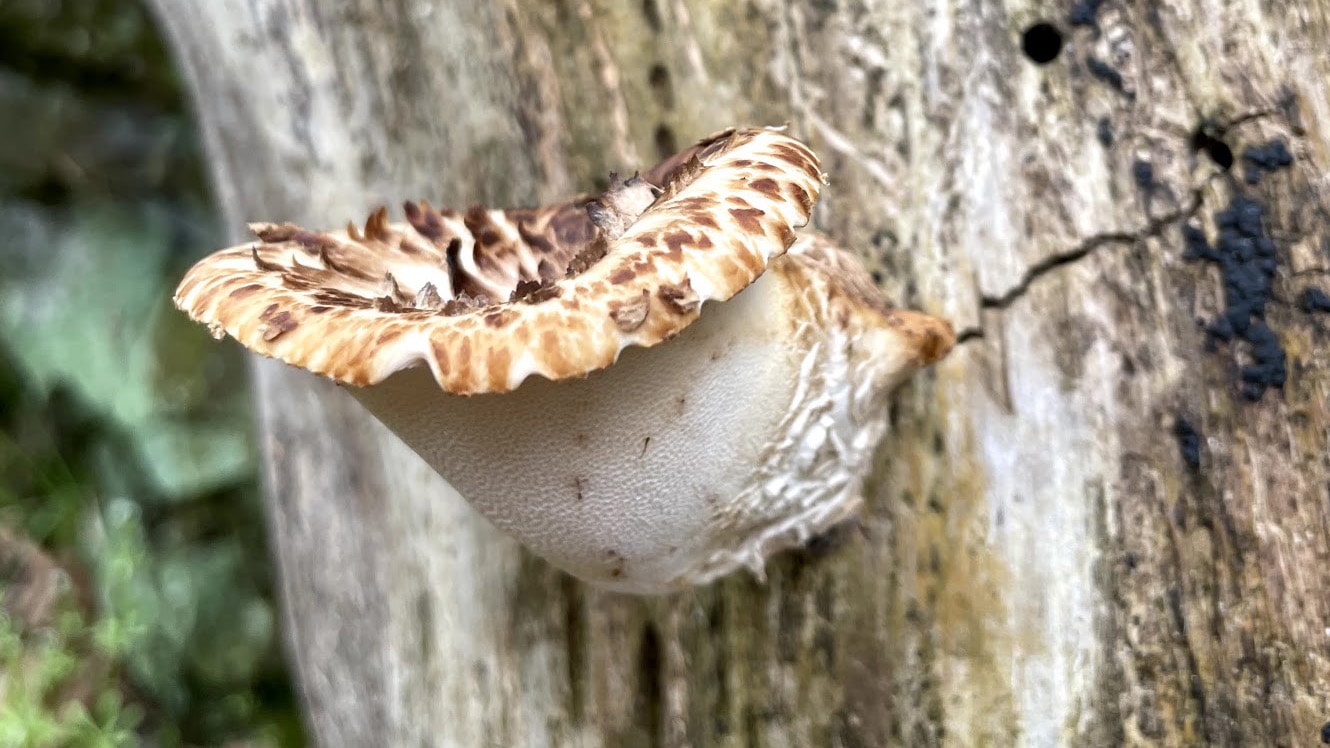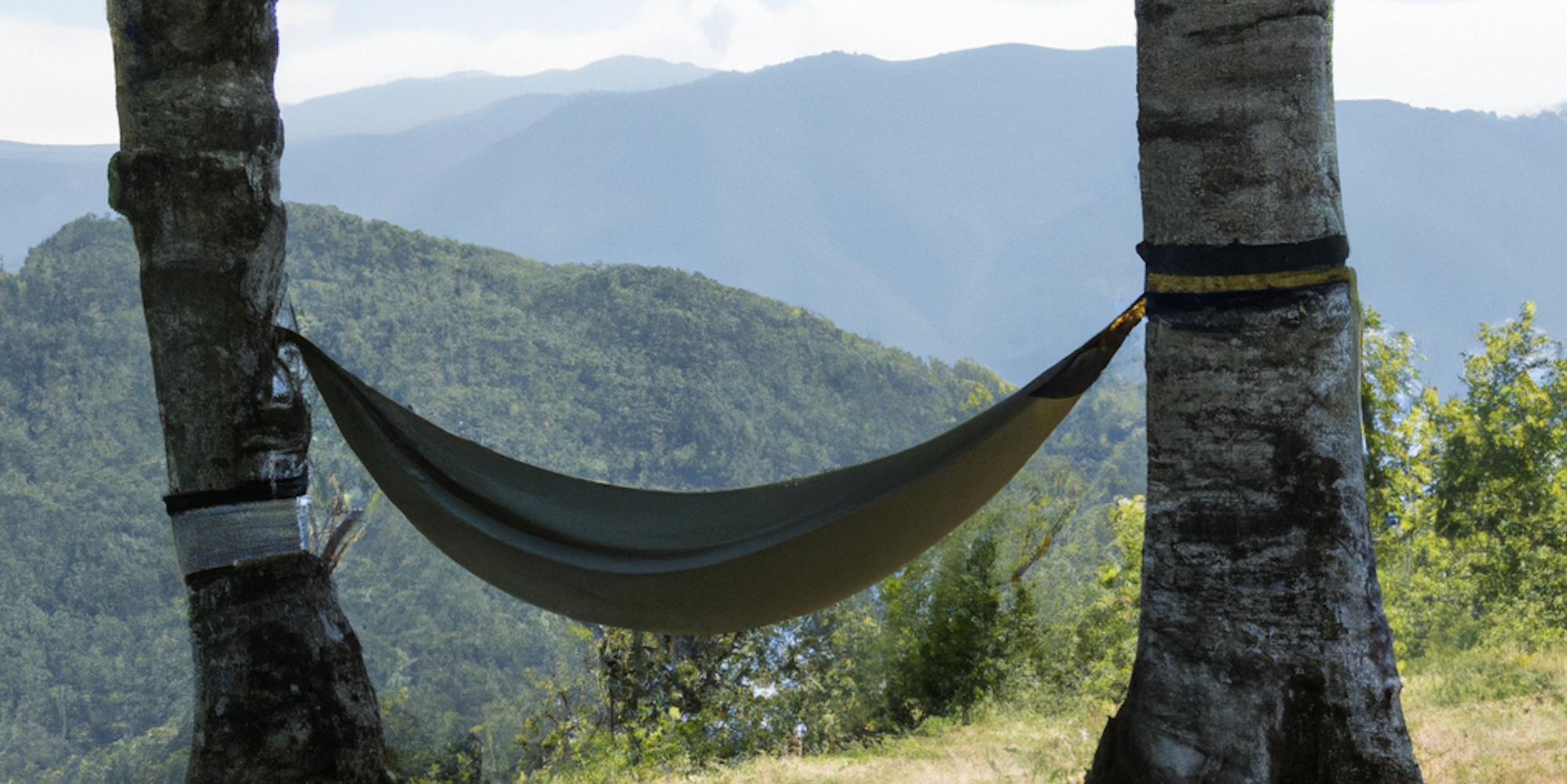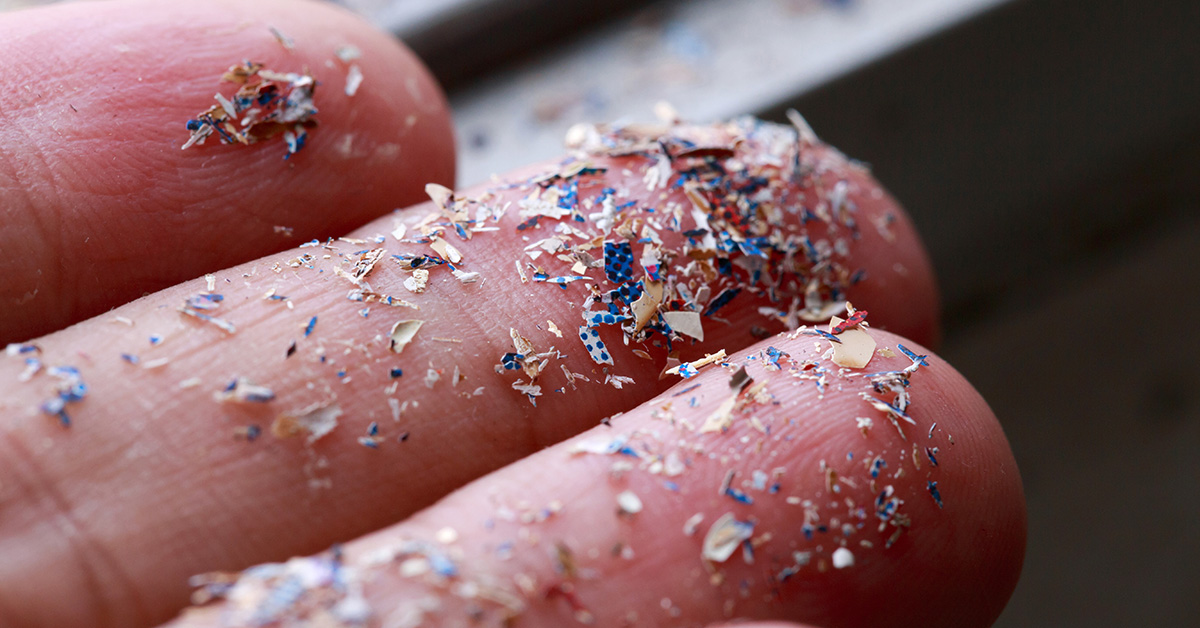Table of Contents

Dryad's Saddle Mushroom | Forage, identify, and eat!
What Is Dryad’s Saddle?
This unique-looking mushroom isn’t one you hear about very often, but that really needs to change. Dryad’s Saddle (Cerioporus squamosus, formerly Polyporus squamosus) is a tasty edible mushroom if you catch it at the right time, and it is one of the first mushrooms to fruit in spring. When morels are eluding you, look to the rotted tree stumps for the delightful Dryad’s Saddle.
The biggest problem with Dryad’s Saddle is timing. It must be foraged while very young before it gets rubbery and tough. In fact, most people discount this mushroom entirely as inedible because they’ve tried to cook up overly mature specimens. Here’s how to avoid that and learn how to love this underappreciated mushroom!
Dryad’s Saddle, also commonly known as Pheasant Back, is a large bracket mushroom that grows on dead or dying hardwood trees. It causes a white rot which will kill the tree if it isn’t already dead. Dryad’s Saddle has beautiful, decorative light and dark brown markings on its cap that look like scales. This is where the common name Pheasant Back comes from; the cap looks like the back of the brown-feathered bird. The name Dryad’s Saddle is a playful association, suggesting that the little dryad nymphs from Greek mythology could use the big mushroom as a saddle.
This parasitic saprophyte is widely distributed across the world, growing in North America, Europe, Asia, and Australia. In the United States, it occurs most often east of the Rocky Mountains and in significant numbers.
How To Identify Pheasant Back Mushroom?
How big is pheasant back mushroom?
Dryad’s Saddle grows quite sizable, in overlapping brackets on dead and dying hardwoods. We’ve seen specimens reach upwards of 2 feet wide, though most don’t get more than 10-12” across. The kidney or fan-shaped brackets average 2-5” thick and have white pores underneath; no gills. Dryad’s Saddle stems, or stalks, are short and fat, white or speckled brown, and are usually no more than 2” long. The Dryad’s brackets often grow in dense tiers, with three or more caps growing out of one central stalk.
What is the pheasant back mushroom cap like?
The caps are the main identification feature, as they aren’t easily mistaken for anything else. Concentric cream-colored to dark brown scales cover the entire light tan cap. Dryad’s Saddle caps are convex while young but flatten as they grow outwards, though they remain semi-depressed in the center towards the stem.
Does pheasant back grow in clusters?
Dryad’s Saddle mushrooms are very alien-looking when they first fruit and before they develop discernible bracket shapes. They look like 4-5 headed brown scaly growths emerging from a thick, white, bulbous base when they first appear.
When Dryad’s Saddle grow to their full mature width, it’s impossible to miss them. Their vast, thick, wide brackets jut forth from the trunk, sometimes creating a semi-circle around the tree. This fungus has a distinctive scent reminiscent of cucumbers or a watermelon rind, depending on who you ask.
What trees does pheasant back mushroom grow on?
While Dryad’s Saddle grows on most dead hardwood species, there are reports that it favors decomposing elm trees. Other popular tree hosts include silver maple, box elder, ash, beech, poplar, magnolia, horse chestnut, willow, maple, and walnut. As you can see, Dryad’s Saddle is not a picky fungus.
Hunting for Dryad’s Saddle Mushroom
What month’s does dryad’s saddle grow?
Start looking for this fungus in the early spring; they usually begin fruiting at the end of April and into May. Since the key to finding good edible specimens is harvesting them young, you’ll want to start looking as soon as possible. Most people combine morel hunting with Dryad Saddle foraging since the timing is quite similar. And since morels are often too elusive, it’s nice not to go home empty-handed!
What weather for dryad’s saddle mushroom?
Dryad’s Saddle mushrooms emerge after a good soaking rain, and they grow fast and furious. If you find young ones, harvest them immediately. This is not one you want to wait on. Also, don’t worry about taking too much; they’ll return yearly to the same spot even with consistent harvesting.
There isn’t any real trick to finding Dryad’s Saddle. Look at every dead or dying hardwood species, and you’ll soon get lucky. Dryad’s Saddle isn’t elusive or rare; most of the time, you don’t hear about them simply because they get passed over since people don’t know what they’ve found.
What does dryad’s saddle grow on?
Keep an eye out for fat brown scaly capped protrusions from stumps and dead trees. If you find them past the edible stage, don’t despair! The caps keep growing through the fall, so you’ll likely find some outside of the ideal springtime harvest. However, they won’t be edible at that mature stage. Mark the spot and return the following spring. Or, revisit the site after a strong rain, as more caps may emerge in different areas on the dead stump.
Dryads Saddle will appear year after year in the same location until the stump runs out of nutrients. It’s hard to say precisely how long you can keep foraging the same spot, but I’ve been visiting the same stump for six years now, and it shows no sign of relenting anytime soon.
Is Dryad’s Saddle Edible?

Yes!
The ideal foraging size for Dryad’s Saddle is a 4-6” cap, although there is some wiggle room there. A lot depends on the thickness of the specimen. Thicker caps are denser and chewier, while thinner ones may remain tender even up to 8-10” wide. The real key to determining Dryad Saddle edibility is by checking the pores.
Fresh, young Dryad’s Saddle pores are small, like pinholes. As they age, the pores dilate and get much broader. You can do a visual check. It may take a while to learn how to eyeball it, but once you see the difference in pore sizes, it becomes a straightforward test of edibility.
Alternately, take a knife and scrape the pores off the underside of the Dryad’s Saddle. If they come off easily, it’s an excellent edible specimen. If they’re tough to get off, the mushroom will be tough too.
What Does Dryad’s Saddle Taste Like?
This fungus is dense and thick, with a texture akin to portobello and a light, slightly earthy flavor. It slices easily, has nice white flesh, and doesn’t fall apart during cooking. We love the tender, succulent taste and texture. Dryad’s Saddle is excellent lightly sauteed with butter and herbs. It also pairs nicely with broth-centric soups, like miso, or included in a stirfry. The key is not to overcook it, as it will become tough if it gets dried out in the cooking process.
Dryad’s Saddle Look-A-Likes
There aren’t any Pheasant Back look alike mushrooms.
There is one similar mushroom to be careful about though.
Train Wrecker (Neolentinus lepideus) caps can have similar brown scales and overlapping growth, but they have gills instead of pores.


